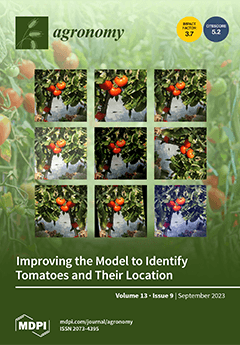Appropriate deep application of fertilizer is the key basis for improving nitrogen use efficiency (NUE). However, the effects of different deep application methods and fertilizer types on nutrient migration, NUE and biomass in wheat season are unclear. Therefore, in this study, a barrel planting test with multilayer fertilization (
15N labeled urea (U) and coated urea (CU)) was conducted in a long-term positioning trial of winter wheat in the North China Plain (NCP). We quantified the migration of fertilizer N (N
dff) in soil–plant–atmosphere and its effects on wheat biomass and NUE based on surface (U
sur, CU
sur), layered-strip (U
str, CU
str) and layered-mix fertilization (U
mix, CU
mix) of U and CU. Compared with surface fertilization, the concentration of mineral N in root zone (0–40 cm) was increased by U
str and U
mix (8.6–50.3%), and the concentration of ammonium N was decreased by CU
str and CU
mix (49.6–76.0%), but there was no change in the nitrate N. The biomass and total N absorption of wheat tissues (straw and root) were increased by 12.3–38.9% under U
str and CU
str. Meanwhile, the distribution of N
dff in the 0–10 cm soil was decreased under U
str and CU
str, but it was increased in the 10–30 cm soil, thereby promoting the absorption of N
dff in wheat tissues by 12.3–28.7%. The rates of absorption and loss of N
dff were the highest (57.6–58.5%) and the lowest (4.5%) under U
str and CU
str, respectively, compared with other treatments. Consequently, layered-strip fertilization optimized the migration and utilization of N
dff within the soil–plant–atmosphere system. This approach equalized distribution, enhanced absorption and minimized losses of N
dff, resulting in an increase in NUE by 9.6–16.7%. Under the same treatment, CU was more suitable for crop nutrient requirements than U, which was more conducive to the improvement of NUE. Our findings will provide a scientific basis for the precise directional fertilization of winter wheat in the NCP.
Full article





